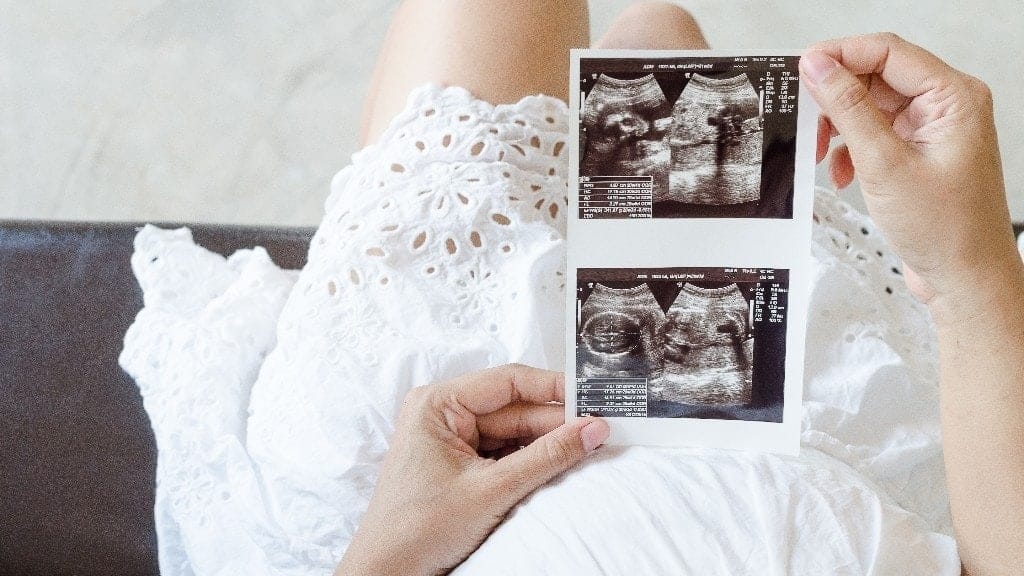Amazing video shows baby born inside amniotic sac—here’s why it happens

It’s called an en caul birth—exceedingly rare, but exceedingly cool.
Perhaps the most common question I get asked as a midwife is, “When will my water break?”
I totally get it. The idea of walking around with a quart of amniotic fluid in your uterus, which could at any moment start flowing down your leg is enough to make anyone anxious. But to answer your question: We don’t know.
The amniotic sac, or bag of water, or membranes, is a balloon-like membrane filled with amniotic fluid that a fetus grows in during pregnancy. At some point, the baby will have to leave that bag of fluid. But when?
In about 10% of women, the water breaks before going into labor. This could be hours before, or weeks before—always call your provider when your water breaks, of course, so they can help you figure out what the next step should be.
In about 89.99999% of women, the water breaks during the course of labor, either on its own or because the midwife or doctor artificially ruptures it (with a little plastic hook).
Just a side note—it doesn’t hurt. It may feel like a tiny little release, or you may feel nothing at all, but there are no nerves in your amniotic membranes.
When your water breaks, sometimes it’s a big gush (that feels a lot like peeing on yourself) and sometimes it’s just a slow little trickle. If you need to have your provider help you determine if your water broke, you are not alone—it can be tough to tell!
When your water breaks, you’ll want to remember TACO ?:
- Time: What time did it break?
- Amount: How much fluid came out?
- Color: What color is it? We want clear, not brown, green or pea-soup-like.
- Odor: What did it smell like? Amniotic fluid has kind of an earthy-smell to it. If it smells bad, you’ll know.
Armed with this information, give your midwife or doctor a call, and they will help you figure out the next step.
Hold it, lady. That’s all fine and good, but you are terrible at math. Ten percent plus 89.99999 percent is only 99.99999 percent. What happens to the other 0.00001 percent?
They give birth with the amniotic sac intact.
In a phenomenon known as en caul births, a woman can give birth to a baby without the water breaking first. It is exceedingly rare—about 1 in 80,000 births, and it is exceedingly cool.
In most births, the power of the contractions or the baby’s movements will cause the bag of water to release. Often, providers will artificially rupture it so that we can help labor move along a bit faster if need be, or to apply an internal monitor.
But if none of those things happen, there is no actual medical need for the water to break. The baby is getting all of his oxygen through the umbilical cord until he takes his first breath, so it is completely fine for him to be surrounded by amniotic fluid.
In a vaginal birth, the woman pushes out her baby surrounded by the membranes and water—it kind of looks like the baby is inside a big, clear water balloon. Once the baby is earth-side, the midwife or doctor just pokes a little hole in the membranes and peels them away from the baby.
En caul births can happen during vaginal or cesarean births.
In fact, a study in China found that when babies had to be delivered preterm (before 37 weeks gestation) via cesarean section, they had less of a risk of asphyxiating (being deprived of oxygen) when they were delivered en caul than when not. So it may be protective for babies.
A baby born in the caul, or in the veil, is believed by some to have either very good luck or very bad luck. A will from 1658 revealed that a man saved his caul, and left it to his daughter, as it was important for its good energy to stay in the family. A textbook from the same year states that the color of the caul would determine whether it would bring good or bad luck upon the family.
In Belgium, people believed that the caul needed to be buried in a field in order for the baby to have a successful life. And “in Germany and elsewhere in Europe the midwife sometimes stole the caul, according to reports, to give it to another child, perhaps her own, or to sell it to a witch.”
While I have not yet sold one to a witch, I have had the honor of attending a few en caul births—and you guys—it is so. cool. Just another amazing thing that can happen on this motherhood journey.


































